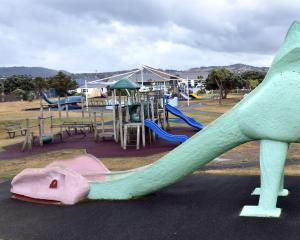A new report on rising sea levels claims 9000 homes are at risk nationally, including 2600 in Dunedin.
The report, from Parliamentary Commissioner for the Environment Jan Wright, also says the Government needs to start preparing for the huge potential cost of rising oceans driven by climate change, which could lead to the "managed retreat'' of coastal communities to higher ground.
"Continuing sea level rise is not something that might happen - it is already happening, will accelerate, and will continue for the indefinite future,'' Dr Wright wrote in her report.
"Homes, businesses and infrastructure worth billions of dollars have been built on low-lying land close to the coast," she said.
A total of 9000 homes nationally were less than 50cm above spring high tides, Dr Wright's report said, 2600 of which were in Dunedin.
Thousands more were within a metre of this threshold.
"Rising sea levels will have major impacts in many places. In time, coastal land will become uninhabitable.''
Dunedin Mayor David Cull welcomed the report.
"Further sea level rise is inevitable, and this clearly present a challenge for our city."
The PCE report uses Dunedin as one of four case studies illustrating the impacts of sea level rise on New Zealand coastal communities. Of the four, Dunedin faces the biggest and most extensive challenges.
The main threat is from rising groundwater in South Dunedin and surrounding area, as groundwater levels are forced up by rising sea levels.
There were no quick and easy answers to the problem.
"Responding to the impacts of sea level rise requires a collaborative effort for a range of agencies including local and regional councils, central government, social service agencies and the community at large.
"The PCE report provides the science behind climate change and sea level rise, along with some useful recommendations, to help inform this collaboration and discussion."
The report noted that Auckland and Wellington had relatively few homes in low-lying areas.
Maps published in the report identified those most at risk. In the Auckland region, these included the inlet at Helensville, small parts of Devonport and Northcote, coastal areas around Mangere and Manukau, and tiny portions of Waiheke Island.
However, the report noted that elevation was only one factor in assessing risk, and some of these areas could be protected by headlands.
Other major New Zealand cities were much more vulnerable to rising oceans.
Christchurch had nearly 1000 homes on land which was less than 50cm above the spring high tide mark.
Five coastal towns - Napier, Whakatane, Tauranga, Motueka and Nelson - had 1000 homes just above the high water mark.
The PCE report, including maps of affected areas, is available online at www.pce.parliament.govt.nz












